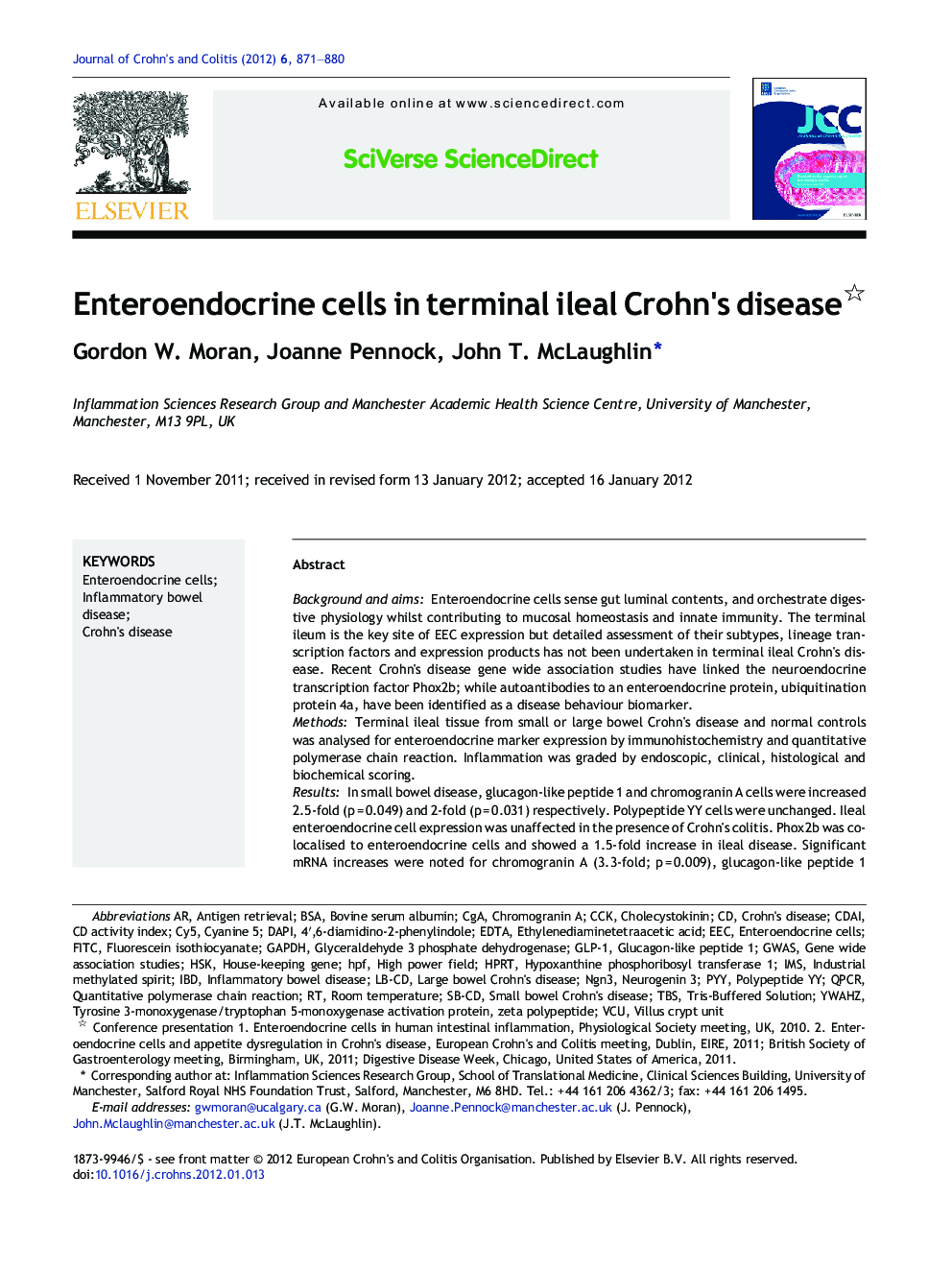| Article ID | Journal | Published Year | Pages | File Type |
|---|---|---|---|---|
| 6099777 | Journal of Crohn's and Colitis | 2012 | 10 Pages |
Abstract
Enhanced enteroendocrine cell activity is present in small bowel disease, and observed in restricted cell lineages. This may impact on the epithelial immune response, cellular homeostasis and nutrient handling and influence appetite via increased satiety signalling in the gut-brain axis.
Keywords
CDAIEECGLP-1PYYCCKHprtHSKhpfDAPIIBDCGApolypeptide YYTBSGAPDHCy5IMSVCUNgn3FITCqPCR4′,6-diamidino-2-phenylindoleBSAbovine serum albuminEDTAEthylenediaminetetraacetic acidAntigen retrievalCrohn's diseaseInflammatory bowel diseaseHouse-keeping geneRoom temperatureenteroendocrine cellscyanine 5fluorescein isothiocyanateGWAShigh power fieldNeurogenin 3quantitative polymerase chain reactionglucagon-like peptide 1Chromogranin Acholecystokininglyceraldehyde 3 phosphate dehydrogenase
Related Topics
Health Sciences
Medicine and Dentistry
Gastroenterology
Authors
Gordon W. Moran, Joanne Pennock, John T. McLaughlin,
